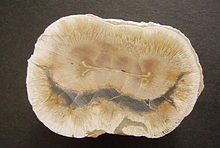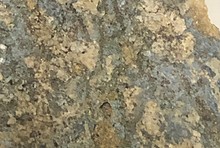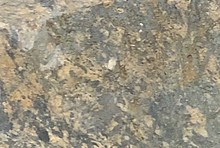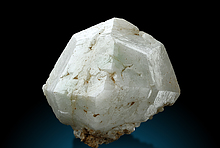Home PageAbout MindatThe Mindat ManualHistory of MindatCopyright StatusWho We AreContact UsAdvertise on Mindat
Donate to MindatCorporate SponsorshipSponsor a PageSponsored PagesMindat AdvertisersAdvertise on Mindat
Learning CenterWhat is a mineral?The most common minerals on earthInformation for EducatorsMindat ArticlesThe ElementsThe Rock H. Currier Digital LibraryGeologic Time
Minerals by PropertiesMinerals by ChemistryAdvanced Locality SearchRandom MineralRandom LocalitySearch by minIDLocalities Near MeSearch ArticlesSearch GlossaryMore Search Options
The Mindat ManualAdd a New PhotoRate PhotosLocality Edit ReportCoordinate Completion ReportAdd Glossary Item
Mining CompaniesStatisticsUsersMineral MuseumsClubs & OrganizationsMineral Shows & EventsThe Mindat DirectoryDevice SettingsThe Mineral Quiz
Photo SearchPhoto GalleriesSearch by ColorNew Photos TodayNew Photos YesterdayMembers' Photo GalleriesPast Photo of the Day GalleryPhotography
╳Discussions
💬 Home🔎 Search📅 LatestGroups
EducationOpen discussion area.Fakes & FraudsOpen discussion area.Field CollectingOpen discussion area.FossilsOpen discussion area.Gems and GemologyOpen discussion area.GeneralOpen discussion area.How to ContributeOpen discussion area.Identity HelpOpen discussion area.Improving Mindat.orgOpen discussion area.LocalitiesOpen discussion area.Lost and Stolen SpecimensOpen discussion area.MarketplaceOpen discussion area.MeteoritesOpen discussion area.Mindat ProductsOpen discussion area.Mineral ExchangesOpen discussion area.Mineral PhotographyOpen discussion area.Mineral ShowsOpen discussion area.Mineralogical ClassificationOpen discussion area.Mineralogy CourseOpen discussion area.MineralsOpen discussion area.Minerals and MuseumsOpen discussion area.PhotosOpen discussion area.Techniques for CollectorsOpen discussion area.The Rock H. Currier Digital LibraryOpen discussion area.UV MineralsOpen discussion area.Recent Images in Discussions
Field CollectingNeed Recommendation On Best Pegmatite Collection Methods

10th Oct 2015 01:06 UTCKell Hymer
1) most videos I see online show people finding pegmatites and crystals in relatively loose gravel. However, I also read that it is good to break open rocks. Should I dig at the base of the granite/pegmatites or should I try to directly break open the granite outcrops?
2) I keep reading about vugs/pockets. Sometimes there are small holes in the granite domes that might be large enough to stick a finger in. Should I hammer away at the side of the dome to expose the hole? The more I hack away, the deeper into the layer of the pegmatite/granite I'll expose and the mineral crystals should get larger, potentially exposing a vug or pocket right?
3) some of the domes have 1" thick quartz veins running along them. Should I hack away at the vein in the hard granite?
I guess I'm trying to determine if I'm better off expending energy using a hammer and chisel directly on the massive rocks or if I should be digging in the dirt on the ground next to the granite and where veins meet the ground instead.

10th Oct 2015 18:05 UTCGary Weinstein
Never an easy answer as there are as many possibilities as months in the year. For question #2 the answers are -YES. Find and follow veins and cracks till they meet or open up and work that area. Massive rocks require a sledge. Loose dirt is sometimes good to find weathered out crystals. If you find goodies at the base of a formation, work your way up to find where they came from. Join a collecting club and go out with the older members and learn from their experience. Glad you are enjoying a great hobby and welcome to mindat. Now if you want to buy out a rock shop....
Best,
Gary

10th Oct 2015 18:52 UTCDana Morong

10th Oct 2015 22:59 UTCDoug Daniels

11th Oct 2015 06:14 UTCKell Hymer

12th Oct 2015 18:48 UTCDana Morong

12th Oct 2015 20:09 UTCKell Hymer
-------------------------------------------------------
> You may also want to know that not all collecting
> site books (or locality guidebooks, which are
> supposed to guide one to sites) - not all of them
> are accurate (in fact some are so vague or even
> inaccurate or that they waste incredible amounts
> of time and travel in the field, without ever even
> getting close to the sites, yet those seem to keep
> being published), so ask around and check up on
> any that you are not certain about. I think we
> need an article on how to evaluate locality
> guidebooks, with hints for those who don't have
> the experience with them.
Hi Dana,
I agree! On my first trip to the Mineral Mountains I spent so much time following vague references in my guide book and from the web that by the time I got to an area that was promising, I was completely exhausted. I will only have one day to collect on this next trip so I will try to make the most of it. I ordered the book you mentioned and I have been researching tons on identifying pegmatites and mineral rich areas. Hopefully I will come back with some good quartz specimens and even some tourmaline or beryl if I am lucky.

16th Oct 2015 00:07 UTCDana Morong

17th Jan 2016 00:12 UTCTim Jokela Jr
The more rock you move, the more likelihood of success. Hard work with the correct gear will invariably move rock, eventually.
Look at how they move rock at the quartz mines of Herkimer, NY. All you need is a crack, and you can even make your own cracks, by hand-drilling holes.
Get out there with the biggest sledge you can swing, and have fun!

18th Mar 2016 17:05 UTCCory

18th Mar 2016 20:40 UTCDaniel Bennett
one more tip. if you are in a very collected area look for bigger holes that have been filled in by someone. chances are they filled it back to discourage others from digging back in and not because its the right thing to do. my best pocket at a crystal claim in mpntana was located that way.so much fun. good luck

18th Mar 2016 20:48 UTCDaniel Bennett




Mindat.org is an outreach project of the Hudson Institute of Mineralogy, a 501(c)(3) not-for-profit organization.
Copyright © mindat.org and the Hudson Institute of Mineralogy 1993-2024, except where stated. Most political location boundaries are © OpenStreetMap contributors. Mindat.org relies on the contributions of thousands of members and supporters. Founded in 2000 by Jolyon Ralph.
Privacy Policy - Terms & Conditions - Contact Us / DMCA issues - Report a bug/vulnerability Current server date and time: April 23, 2024 16:10:39
Copyright © mindat.org and the Hudson Institute of Mineralogy 1993-2024, except where stated. Most political location boundaries are © OpenStreetMap contributors. Mindat.org relies on the contributions of thousands of members and supporters. Founded in 2000 by Jolyon Ralph.
Privacy Policy - Terms & Conditions - Contact Us / DMCA issues - Report a bug/vulnerability Current server date and time: April 23, 2024 16:10:39











